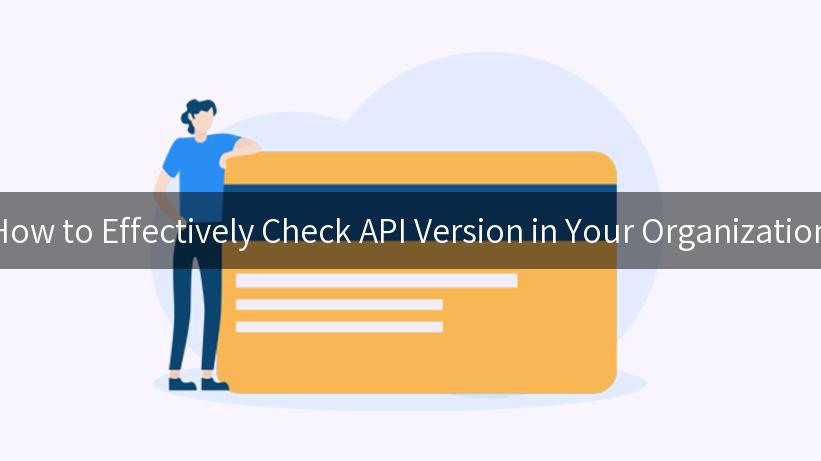
In today’s rapidly evolving technological landscape, APIs (Application Programming Interfaces) are the backbone of most modern applications. They facilitate communication between different software systems, enabling seamless data exchange and functionality integration. As organizations grow, managing and keeping track of API versions becomes crucial to ensure compatibility and maintain efficiency. This article explores how to effectively check API version in your organization, with a focus on tools like AI Gateway, Tyk, and strategies to handle API call limitations.
Importance of API Versioning
API versioning is a critical aspect of API management that allows developers to upgrade or change an API without affecting existing clients. This is particularly important in a business environment where downtime or incompatibility can lead to significant losses. Here are some key reasons why API versioning is essential:
- Backward Compatibility: Ensures that new updates do not break existing applications using older versions.
- Incremental Development: Allows for the gradual introduction of new features without disrupting the service.
- Deprecation Management: Provides a structured way to deprecate old versions when they are no longer needed.
Tools for API Management
AI Gateway
AI Gateway is a powerful tool that supports API management by providing features such as rate limiting, authentication, and analytics. It can be instrumental in managing API versions within your organization. With AI Gateway, you can:
- Easily route traffic to different API versions.
- Enforce API call limitations to prevent abuse and ensure fair usage.
- Monitor and analyze API usage to understand trends and make informed decisions.
Tyk
Tyk is another robust API Gateway designed to simplify the management of your API ecosystem. It offers:
- Version Control: Tyk supports multiple API versions, making it easy to manage different iterations of an API.
- Security: Provides authentication and authorization mechanisms to secure your API endpoints.
- Analytics: Offers detailed insights into API usage, helping you track performance and usage patterns.
Steps to Check API Version in Your Organization
Checking API version effectively involves several steps. Here’s a detailed guide to help you navigate this process:
Step 1: Establish Versioning Strategy
Before implementing version control, establish a clear versioning strategy. Common strategies include:
- URI Versioning: Include the version number in the API endpoint URL (e.g.,
/api/v1/resource).
- Header Versioning: Specify the version in the HTTP header (e.g.,
API-Version: 1).
- Parameter Versioning: Use query parameters to define the version (e.g.,
/api/resource?v=1).
Choosing the right strategy depends on your organization’s needs and existing infrastructure.
Step 2: Implement Versioning in APIs
Once a strategy is established, implement versioning in your APIs. Here is a simple Python example demonstrating URI versioning:
from flask import Flask, jsonify
app = Flask(__name__)
@app.route('/api/v1/resource', methods=['GET'])
def get_resource_v1():
return jsonify({"version": "v1", "data": "Resource data for version 1"})
@app.route('/api/v2/resource', methods=['GET'])
def get_resource_v2():
return jsonify({"version": "v2", "data": "Resource data for version 2"})
if __name__ == '__main__':
app.run(debug=True)
This code snippet sets up a basic Flask application with two versions of an API endpoint.
Step 3: Use Tools for Version Management
Leverage tools like AI Gateway and Tyk to manage API versioning. These tools provide dashboards and analytics to monitor API usage across different versions. They also facilitate enforcing API call limitations, securing API endpoints, and routing traffic based on version.
Step 4: Monitor and Analyze API Usage
Regular monitoring and analysis of API usage are crucial for effective version management. Use the analytics features provided by AI Gateway and Tyk to gain insights into:
- Which versions are most used: Helps prioritize maintenance and updates.
- Performance Metrics: Identify any performance bottlenecks related to specific versions.
- Error Rates: Detect and address issues quickly to maintain service reliability.
APIPark is a high-performance AI gateway that allows you to securely access the most comprehensive LLM APIs globally on the APIPark platform, including OpenAI, Anthropic, Mistral, Llama2, Google Gemini, and more.Try APIPark now! 👇👇👇
Step 5: Communicate Changes to Stakeholders
Effective communication is key when managing API versions. Ensure that stakeholders, including developers and clients, are informed about:
- New version releases and their features.
- Deprecation schedules for older versions.
- Migration guides to help transition to newer versions.
Handling API Call Limitations
API call limitations are an essential aspect of API management, especially when dealing with public APIs. They help prevent abuse and ensure fair usage among users. Here’s how to handle API call limitations effectively:
-
Define Rate Limits: Clearly define and document rate limits for each API version. This can be done at different levels, such as per user, per IP address, or per application.
-
Implement Throttling: Use tools like AI Gateway and Tyk to implement throttling mechanisms that enforce rate limits and protect your APIs from overuse.
-
Provide Feedback to Users: When users exceed their API call limits, provide clear feedback through HTTP status codes (e.g., 429 Too Many Requests) and informative error messages.
-
Offer Tiered Access: Consider offering tiered access levels with different rate limits and features. This encourages users to upgrade for higher limits and additional functionality.
Best Practices for Checking API Version
Following best practices ensures efficient API version management:
- Consistent Versioning: Maintain consistency in your versioning strategy across all APIs in your organization.
- Automation: Automate version checks and updates using scripts and tools to minimize manual effort and reduce errors.
- Documentation: Keep comprehensive documentation for each API version, including usage examples, rate limits, and deprecation timelines.
- User Education: Educate users and developers about the importance of API versioning and how to adapt to changes.
Conclusion
Effectively checking and managing API versions in your organization is crucial for maintaining seamless operations and ensuring compatibility across different systems. By leveraging tools like AI Gateway and Tyk, implementing a clear versioning strategy, and handling API call limitations, you can achieve robust API management. Remember, regular monitoring, communication, and adherence to best practices are key to successful API version management.
Incorporating these strategies will not only help in maintaining the integrity of your API ecosystem but also enhance user satisfaction and streamline development processes.